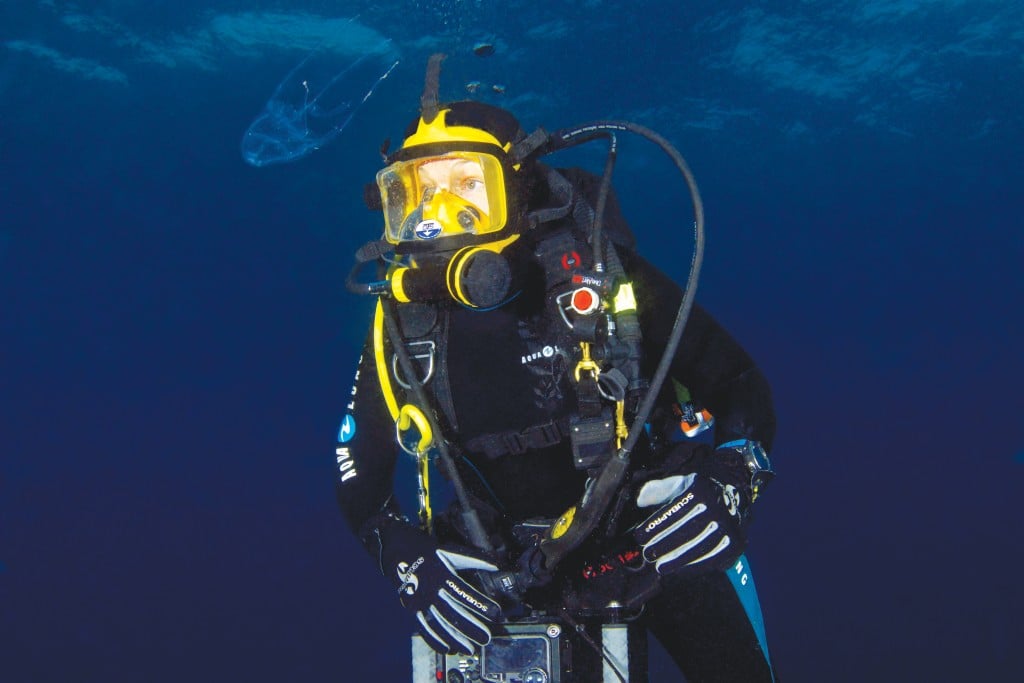Box Jellyfish Sting Experience Inspires UH Researcher to Create Effective Treatment

Problem: Box jellyfish kill more swimmers than sharks in Australia and elsewhere in the Indian and Pacific oceans. Stings from the smaller Hawaii species can be painful and debilitating. Controversial “antivenom” treatments have a poor 40-year track record and fail to prevent death in animals injected with venom.
Inspiration: An encounter with box jellyfish while swimming in Waikiki 16 years ago left UH biochemist Angel Yanagihara bedridden. Painful skin eruptions lasted four months. The experience inspired her to do what she calls “classic biochemistry” sleuthing, funded by the Bradley and Victoria Geist Foundation.
Research: Yanagihara discovered that box jelly toxin quickly forms pores in red blood cells, “like shooting buckshot” through the membrane. Potassium leaks out, creating an electrolyte imbalance that can trigger cardiac arrest. The protein she identified was similar to a bacterial toxin, so Yanagihara poured through medical literature dating to the 1930s on pre-antibiotic treatments for bacterial infection. She zeroed in on the compound zinc gluconate, which effectively inhibits pore formation. Her formulation proved effective in cell cultures and animal tests.
Product: Waterlife Research has licensed the patented technology and is testing a commercial treatment. It was used by Diana Nyad after jellyfish stings ended her 2012 attempt to swim from Cuba to Florida. “This is the only treatment I’m aware of that gets to the issue,” says Ralph Goto, administrator of the Ocean Safety and Lifeguard Services Division for the City and County of Honolulu. “Angel’s work is very significant.”
Potential: Because the pore-forming protein is very similar to bacterial toxins involved in septic shock, further work could generate new medicines for that condition. Other proteins isolated from jellies, such as a fluorescent protein found in Portuguese man-of-war that emits light in infrared, could yield useful diagnostic tools, such as nontoxic markers for cancer cells. “There’s lots more to be done,” Yanagihara says.






